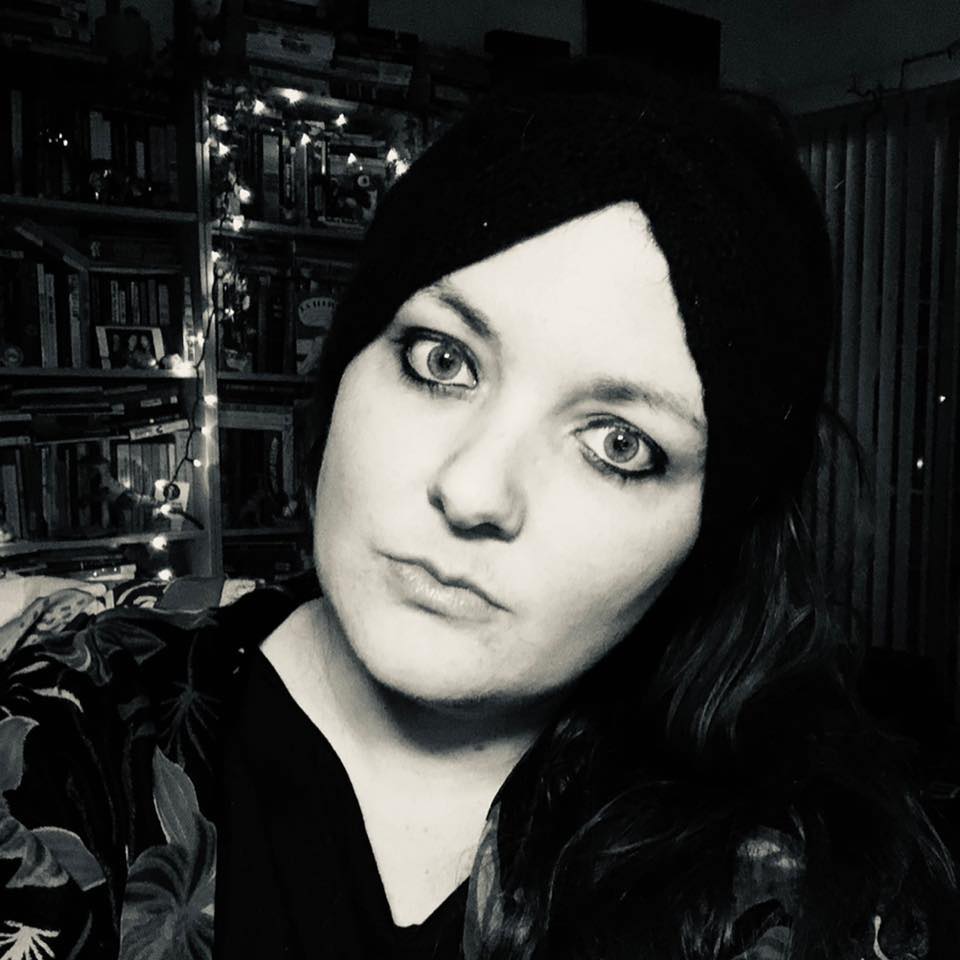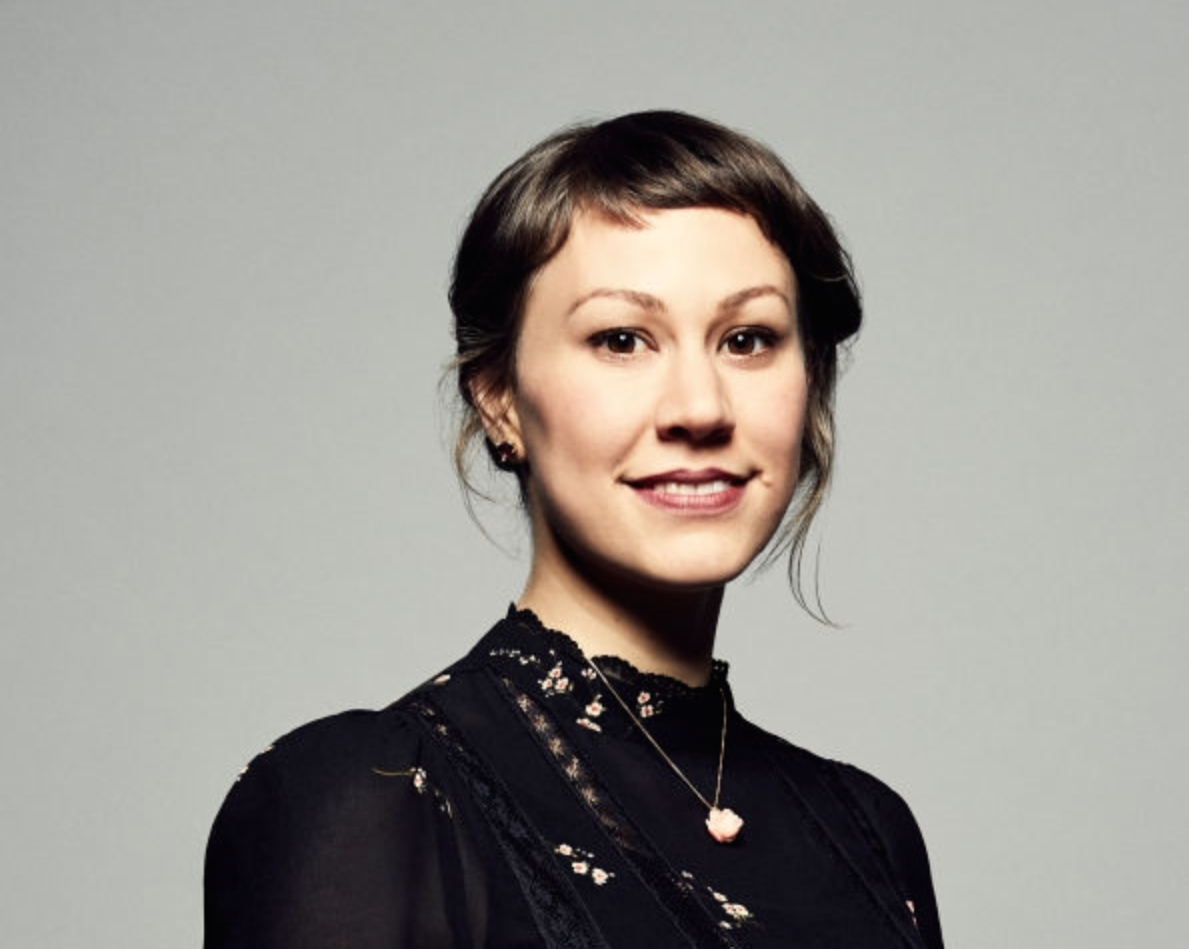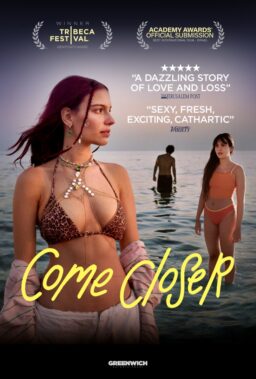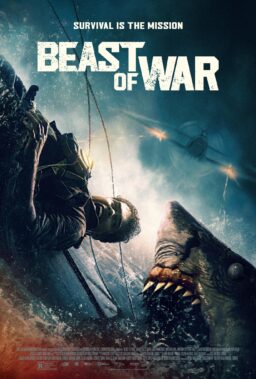Told with the blithe visual language of the French New Wave, Sara Dosa’s explosive Sundance-winning documentary “Fire of Love” follows French volcanologists Katia and Maurice Krafft, whose lives and careers became inextricably combined after they met as university students and fell deeply in love. A perfect meeting of the minds, the two shared a passion for volcanoes that took them around the globe. Often the first on the scene of active volcanoes, their life’s work was integral in the creation of safety guidelines for many nations in which active volcanoes reside.
Combing through hours of footage shot by Katia and Maurice themselves, Dosa and her editors Erin Casper and Jocelyne Chaput have crafted a visually stunning film filled with truly jaw-dropping imagery of magma, lava, and the rare beauty found only in the most remote locations on the planet. Paired with a playfully inquisitive narration from Miranda July, “Fire of Love” is an exquisite hymn to the passionate lives and love of two remarkable people who were lucky enough to find their perfect match in both love and occupation.
For this month’s Female Filmmakers in Focus column, RogerEbert.com spoke to Dosa at the SXSW Film Festival about piecing together Katia and Maurice’s volcanic love story, humanity’s mystical connection to the Earth, and embracing the mystery of the human heart.
What was the process to use all this archival material to craft a love story? Love stories are so personal.
I was super lucky to have two brilliant editors to work with, Erin Casper and Jocelyne Chaput. We loved the archive. The imagery is just spectacular. You can really sense Maurice and Katia’s passion when you see their footage and how they were framing shots. But missing from the archives was holding hands, kissing, shots of them even together. So we really were trying to get creative about what Maurice and Katia’s love language would be, to use a very contemporary term. And quite simply, it is volcanoes.
Knowing that we wanted this love triangle between Maurice, Katia, and volcanoes to be the heart of the film, and also kind of our main anchor for our narrative, we thought about how we can use volcanoes to tell the story of their love. Luckily, it does make it easy. There’s the boiling lava that can indicate early love, and when their passions first ignited, all the way to the explosiveness that can culminate when passions meet and collide. As well as imagery of destruction. I think so many of us know heartache, and can know the pain and the feelings of being destroyed. So volcanoes certainly lend themselves well to telling that piece of the love story, too. I think that was what we really felt lucky to get to focus on. It took some time to land on that. But once we decided this was our direction, we dove right in.
A recurrent theme in your filmography is people who intertwined with nature and the mysticism of that. What draws you to those kinds of stories?
I’m endlessly fascinated by how humans make meaning out of the natural world. Specifically, how they can form relationships with the power of nature. I really come to the word sentience. I feel like there’s this tendency to anthropomorphize nature, and to make nature human in a way. I think that that’s kind of a beautiful thing that can allow for a very personalized relationship. But, also seeing nature as sentience, without anthropomorphizing, nature as nature is extremely meaningful. It’s something I’m really inspired by. To think of volcanoes having intelligence, which they do. I’m very curious about what that means. And, also, politically, there’s so many narratives out there about how the Earth is dead. It’s a resource to be capitalized upon or extracted from. And so I think showcasing how alive and powerful the natural world is, and also that humans are not separate from it. We’re all part of it. That’s really important to me, specifically, at this kind of juncture of history that we find ourselves in.

You went through about 200 hours of footage. How do you decide which footage to keep and did you have various cuts or different lengths of the doc before you landed on the final version?
First we started with an outline. That was immensely helpful to us, because there was just so much footage. We did watch everything. We watched probably about 180 hours of Maurice and Katia’s own 16 millimeter footage. Then there’s about 45 to 50 hours of interviews that were shot of Maurice and Katia that was shot by other people. So we did watch and go through all of that as well. We wrote this outline ahead of time, which helped us to decipher the steps of a love story. That was just very useful in focusing things down. Because there was just so much amazing imagery that we we’re just like, “Ah, this is incredible.” And you want to use it, but we couldn’t if it’s not going to fit in. I really feel like Maurice and Katia’s legacy and what they left behind is so expansive and magical and beguiling that there could really be 20 films made from their archive, and each of them would be totally unique. But there are a lot of scenes and images that still are stuck in my mind that I would love to figure out a way to use them.
Did you do much research outside of that archival and sort of what was that process?
Yeah, we did do a lot of research outside of the archival process. One of the things that was particularly special was getting to interview people who knew and loved Maurice and Katia and worked with them. We never interviewed them on camera, because we always knew from the beginning that we wanted this to be told through their own archival material. But I had really long conversations with the cinematographers that they worked with, other geologists, and spent a really wonderful long day with Maurice’s brother in Nancy, France. It was really important to us to get behind just the materials that they left to make sure we were telling an accurate story. That can often not be expressed in public facing materials. So conducting those interviews was very valuable. We also read the nearly 20 books that Maurice and Katia authored. That really helped us to understand their voices and the richness of their personalities, which really comes through in the writing. Then there’s a number of biographies about them, too, as well as scientific articles. So we really geeked out.
Are most of her books still in French, or did they get translated?
There’s a few that are translated into English, but overwhelmingly they’re in French. Also, most of them are out of print. So we were having to find like one used bookstore in eastern France that is selling one copy of this one book. We really hunted them down.
That must have been fun. I love searching for rare books. When did you know you wanted narration to sort of pull everything together and how Miranda July became involved?
We actually knew early on that we wanted a narrator, mostly because the archives were amazing, but very limited. All of the 16 millimeter archives didn’t have sound, so we knew that we needed to bring in a narrator, not just their interiority, but also because we needed some help for plot and context. We were really inspired by French New Wave films to make this film since that was kind of the aesthetic movement happening as Katia and Maurice themselves were coming of age. There’s such fun and playful narrators throughout the French New Wave movement.
From the beginning, we started off sculpting and writing narration, but it was really important for us to figure out who we were writing for. At first, we thought maybe we wanted a French narrator. But when we were brainstorming, our executive producer, Greg Boustead actually suggested Miranda, and Jocelyne, Erin, and I were just like, “Oh my God, we’ve been writing for Miranda this whole time without ever quite realizing it.” She’s been a huge artistic influence in my life. We had been writing in this voice that we called “deadpan curious,” and I feel like Miranda just nails that. She has such a wonderfully inquisitive way of looking at and understanding and delving deeply into the strange fragility of what it means to be human. I feel like Maurice and Katia are such bold, strong characters, but there’s such fragility there, too. They’re always living right on the edge of life and death. Miranda perfectly drew out what we wanted and elevated the film exponentially with her voice and her way and her artistry.
Was any of the narration their own writing?
The narration itself wasn’t their own writing. There’s some lines from their books that we pulled out and had an actor voice. We were very inspired, though, by their writing for the narration. We really tried to absorb their style. They write very hyperbolically. I say that with total love. It fits their bombastic personalities. There’s a real energy, especially to Katia’s writing. So we really tried to channel that in the voice that we were writing with, even if the narration itself wasn’t directly from their books. But there are discrete moments in the film, where, our narrator will say, here’s an actor reading Katia’s account and then we’ll have Katia’s to his actual words.

Do you think working during the early days of quarantine and COVID was more of a challenge or did it help spur the creativity behind it? Or a little of both?
This film actually came about as kind of a COVID pivot and so to speak. My producer Shane Boris, and I were actually in early pre-pro on a different film that was supposed to be about these mysterious methane explosions happening in Siberia. We were supposed to go to Siberia in April 2020.
That didn’t happen.
That definitely didn’t happen. But we were looking for an archival project and this was a story we’d come across on our previous film [“The Seer and the Unseen”] and got really excited about it. So the project may not exist if it weren’t for the pandemic and the need to go to material that had already been shot. But I think it was certainly a challenge to not work in person in the early days of the pandemic. There were so many themes. It was a devastating and fearful time, and my own life went through some significant changes during the early days of the pandemic. But being so kind of close to these themes of life, death, fear, uncertainty, that conjured these deep, real existential questions that the project became kind of a way of teasing out what is meaningful, what it means to embrace fear and to live through it.
Of course, it’s doing something completely different than Maurice and Katia, but their lives and their boldness really served as an inspiration. Trying to sort out some of these questions really provided a creative emotional sanctuary for me and my team. Once things eased a little bit and once everyone was vaccinated, Erin actually moved in with me for a few months. She’s based in New York and Jocelyne, our other editor, lives up the hill from me in Berkeley, but she was over at all hours of the night. And Shane, one of our producers too, came for long stretches of the time. So we were able to form our own COVID pod and work long hours. To feel that closeness was so fun. It also allowed us to keep this wonderful creative flow going.
Can you talk a little bit about what that collaborative process with your editors is like?
This is the third film I’ve done with Erin. She’s an immensely talented editor and also a dear friend. We have a lot of shorthand with how we work, which makes things easy. Jocelyne has been an incredible new addition to our team. The way we work is highly collaborative. Shane and I actually had a writing retreat in October of 2020, where we wrote the outline and set the intentions and tone and structure for the film. Then we brought Erin and Jocelyne in. Once we started watching all the footage, there was already a world built for them. Jocelyne and Erin have spoken about how helpful that was in terms of allowing them to go towards their own instincts, but have a clear direction in doing that.
They would cut scenes, share them with me, and I would give notes. They would cut again, send it back to me, and I would give more notes. Then we would do the puzzle of structuring the film. It was deeply collaborative the whole way through. Our other producer Ina Fichman would also give notes. She wasn’t necessarily in the edit room with us, but she was a huge part of our team and responsible for securing the archives in the first place. It was a funny dance with writing narration too, because at first our narration really served as exposition. It was helping us to get from A to Z. But because it was so expositional, it was quite boring. So we really found that we had to like strip all of that away and it became our guiding principle to instead ask questions and have a prompting, inquisitive narrator. That whole process was really fun, but challenging and that was something that me, Erin, Shane, and Jocelyne did very collaboratively as well.

How did you come about using the Brian Eno track “The Big Ship”?
I love that song very much. When we did a 10-minute sample reel in late 2020, we had a playlist of songs and that was a song I put on there and just always geeked out too. To me, it’s one of those heart-expanding, swelling songs that really keynoted the feeling that I wanted especially for the early part of the film where Maurice and Katia are really falling in love. Erin and I were working on the scene where it appears, and I remember writing the narration specifically with the rhythm of that song in mind. Erin and I were very much excited to work with that song. I was very insistent it had to be this song. She did such a wonderful job of playing with the dynamics of the song itself. There’s a moment when the song crescendos and you see Katia turning the dial on a seismometer. There’s a lot of fun snap zooms, and things like that. It was really fun to play around with using that song as not just a core, but a real kind of dynamic, creative, playful narrative element.
How do you hope people feel either while they’re watching the film, or when it’s over?
I think first and foremost, I want people to just love Maurice and Katia. I just think that they’re such incredible, inspiring people and that they’ve taught me so much about what it means to live a meaningful life and die a meaningful death. I hope people come away with love for them. I really want people to be awed and know how powerful our planet is. To know that something like a volcano can exist on our planet. It seems so remote and inaccessible, but magma is rumbling underneath our feet at all times. To feel that deep sense of interconnectedness to how our world forms and that humans can have a relationship with Earth in that kind of way. To know that there’s power in the planet.
And maybe it’s a bit cheesy, but also that there is a great mystery in the human heart. I really hope that people will know that even they can, like Maurice and Katia, go towards that mystery. Towards that unknown. They knew that they could never quite understand why they went towards it, why they sought understanding on such a deep level, all the while knowing they’ll never quite understand. But that’s what brought them love. And that is what it means to pursue something you love. To just have that abandon and embrace the mystery. So I think, especially in these uncertain times, I hope people will come away with this feeling that if you go towards what you love, even knowing you might not ever understand it, you can still live a deeply meaningful life.
You mentioned that Miranda July was an inspiration, as well as the French New Wave. Are there any female directors that have inspired you in your filmmaking or inspired you to become a filmmaker?
Yeah, definitely. I mean, Agnès Varda.
I can definitely see Varda in the film. She’s such a playful filmmaker.
I love her so much. I think I’ve seen “The Gleaners and I” like 20 times. I love her winking, thoughtful, hilarious, poignant way of telling stories. Her boldness with form and the experimentation she had across her entire body of work. Chantal Akerman, who I don’t really see in “Fire of Love” at all, but I’m absolutely moved by her work, and her compositions and characters. Kelly Reichardt. I love all of her films, but I remember when I saw “Wendy and Lucy,” I was just struck by her precision and the sparseness of dialogue. I felt like there was such an openness in terms of how you show, don’t tell. I could go on. I love “First Cow.”
“First Cow” was so good. That was the last movie I saw in theaters before quarantine.
They’re just incredible filmmakers who I hope to always learn from. I have a dear friend named Nadia Shihab, who made one of my favorite documentaries of all time that hasn’t been as visible as it should be. It won an Indie Spirit Award two years ago. Her film was called “Jaddoland” and she’s an incredibly talented filmmaker. She makes really personal, deeply poetic, and hilarious films. I want to give her a special shout out, but the list goes on and on and on.
“Fire of Love” is now playing in select theaters.












